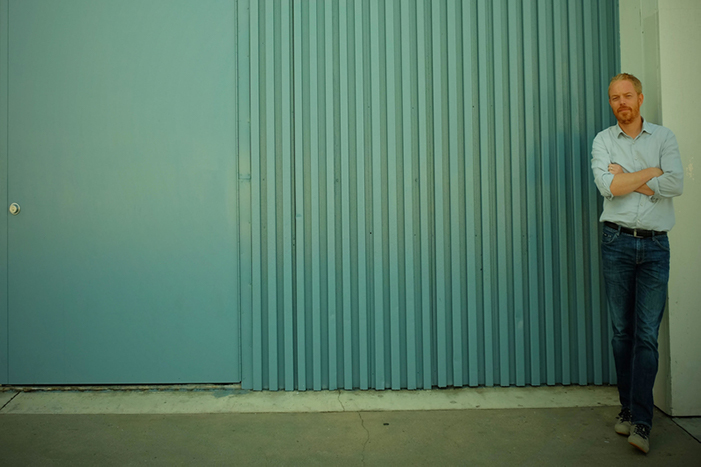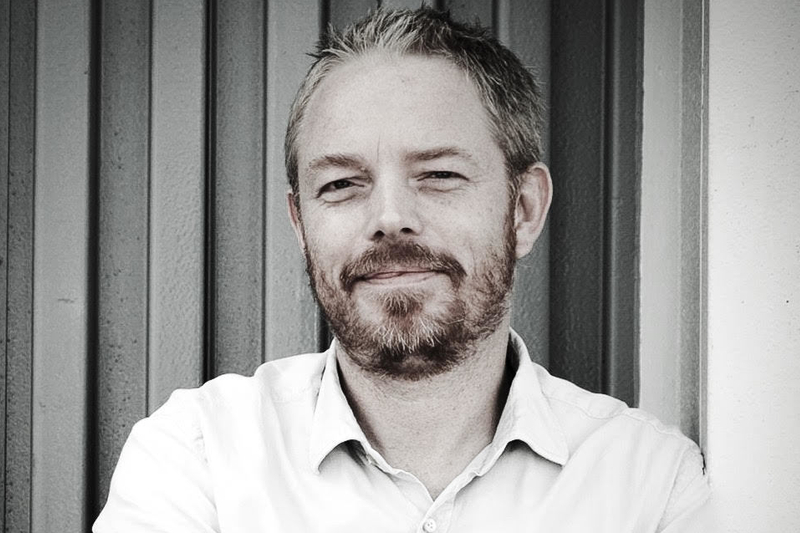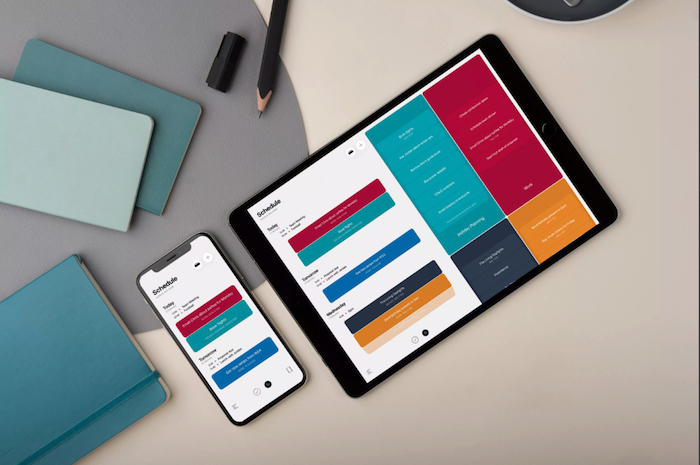WHO WAS YOUR FIRST CREATOR/INNOVATOR CRUSH? WHO HAS BEEN THE MOST INFLUENTIAL TO YOUR CREATIVE APPROACH?
It isn’t really one person. It’s more a group of designers. If I dive back to the beginning I would say Eames and other early Danish furniture makers mostly because of the innovative approach between materials and their use, production processes, user experience, and aesthetics. I don’t consider myself just a marketer or technologist. My goal is to blend user experiences with an expert eye for technology and marketing along with an expert eye for aesthetics.
YOU SAY YOU WANT TO “PROVIDE THE CONSUMER WITH A RICH DIGITAL-ANALOG EXPERIENCE?” HOW DID YOU KNOW THAT WAS THE CAREER PATH YOU WERE GOING TO FOLLOW?
I’m a product person. There is a term in Danish called tingslighed. It’s defined as the object and the object’s importance in your life. The haptic relationship with an object and its significance in the user’s life. The experience we all want is sensory. If you think back, you may remember the idea that the digital plane was going to eradicate the analog plane? That it wasn’t like this at all. There was never an antagonistic relationship or a conflict. It’s a relationship. These values complement one another. They thrive together on a continuum. Analog-digital-analog — sketch, digital, print — and so forth. My perspective is that I’m a bridge builder helping the creative flow between the two experiences.
WE LOVE THE CONNECTION YOU FEEL TO THE CONSUMER. CAN YOU EXPLAIN MORE ABOUT YOUR APPROACH TO THE DIGITAL MARKETING INNOVATIONS BEING ROOTED IN THE HUMAN EXPERIENCE?
I feel the audience defines our approach. The user created the path we must take by how they use and express use of Moleskine. This is especially true on the digital plane. When Moleskine first emerged in 1996, it was the beginning of the blogosphere, so it was natural for us to have this huge following of writers. Our best narrative is to follow what people do and how their experience is evolving. Our digital approach is a continuation of this, and is and always will be rooted in human action.
SOCIAL MEDIA CAMPAIGNS LIKE “HANDWRITING DAY” ON TWITTER TOTALLY IMMERSE THE USER IN BEING PART OF THE MOLESKINE EXPERIENCE AND LETS USERS BECOME PART OF THE MOLESKINE COMMUNITY. WHAT WAS THE PHILOSOPHY BEHIND THIS THOUGHT-PROVOKING STRATEGY TO ENHANCE USER EXPERIENCE?
It’s been running for a number of years, and the idea behind it is simple: We celebrate handwriting day because it is handwriting that’s being threatened the most by digital. Some schools in Europe are removing handwriting from the curriculum. Removing a tool for spontaneous creativity does not benefit the student. Handwriting Day celebrates the intimacy of that connection felt when putting pen to paper.
The idea that technology was going to destroy paper was real. Although digital wasn’t eradicating the notebook, it is hurting handwriting. When Apple released its Pencil for iPad Pro, I received many messages asking me, “Is this the end? Did paper finally lose?” No, I was rather enthralled by this technology. It meant that technology embraces this intimacy found in handwriting.
WHAT WAS IT LIKE TO COLLABORATE WITH EVERNOTE?
It’s the longest-running partnership in Silicon Valley — since 2012.
(Laughter.)
It was different having to align manufacturing with a software launch. We live in different worlds, totally on opposite ends of the scale. We both committed to making this work and had to plan our release three seasons into the future. This is not the way it works in the manufacturing world, but we did our part and Evernote did theirs. It was important for everyone to be on the same page. New teams were formed so we could both create an aesthetically and technologically useful product that gives the user a unique experience.

WE LOVE THE SMART WRITING SET. IS IT MEANT TO ENHANCE OUR ANALOG USER EXPERIENCE?
There are two elements to the set: the Paper Tablet, which is a Moleskine notebook, and the Pen+, which is the hub of the set and it functions a pen. When enabled, the Pen+ captures every pen stroke, doodle, or note on the Tablet and transfers the data to the user’s device of preference via the companion app.
This is not a new technology, but it is quite different. The paper tablet is paper and it does give the user a sensory experience of touch and feel. The unique feeling of the pen scratch and etch of ink into the paper’s surface is not lost. It’s definitely not like writing on glass. What makes this exciting for me is that I knew we had a hit when people forget to power up the Pen+. This really illustrates that the analog function is not lost to the digital experience.
Also, the user decides what and when something is digital. That’s fundamentally rooted in the user experience: it is truly an opt-in process. The user has the choice to keep it personal or share it digitally. You decide when you want to go digital by doing what is known and comfortable. The devices a user chooses are part of the experience.
This is building bridges, joining two planes: the bridge allows passage into the creative ecosystem. When you build bridges, it’s important to have working partnerships. Bridge building allows the user access to the devices within their creative ecosystem. It is an inclusive relationship, never exclusive.
WHAT IS YOUR FAVORITE TREND IN DIGITAL MARKETING (OR ELSEWHERE)? IS IT JUST A FAD OR IS IT HERE TO STAY?
I’m very much interested in machine learning and it’s definitely NOT a fad. I’m interested in designing a user experience that is functional. I’d like to have time to explore ways in which we could truly benefit from this experience. AI is doing great things for companies and this does excite me. No one can tell us definitively how these machines can enhance our life experiences. In years to come, it will be interesting to see how machine learning benefits each user individually.
YOU’RE ON TWITTER. WHO DO YOU FOLLOW FOR DAILY MOTIVATION/INSPIRATION?
For me, Twitter is an eclectic experience. Of course, I follow musicians, artists, writers, and creators that I have come to admire. Inspiration comes more from people I actually know, worked with or received value from at some point in my life. For example, Guy Kawasaki, Joe Pine, and Charlie Lee. People whose opinion I value. When I open up Twitter and see a snapshot of the flow, it should be someone’s view that prequalified where I am or aligned with — and definitely where I am headed.
MOLESKINE’S PHILOSOPHY FITS NICELY WITH OTHER TRENDS GOING ON: THE RETURN TO REAL FILM, BOOKS, LP RECORDS, ETC. WHAT’S GOING ON CULTURALLY AND SPIRITUALLY THAT MAKES PEOPLE WANT TO PIVOT BACK IN TIME?
The difference is the actual feel of a book, record, or photograph. The medium itself has a past. The worn edges, the grain, the weight, colors, and tone allow one to feel the past, the age, the actual space has its own cultural experience in time.
There isn’t anything new happening. The analog experience will always be there. That way we can choose the way we experience the moment. Analog is a way to keep a continuum flowing with the past, from generation to generation.
When flipping through pages of a notebook, the user is allowed to remember mood, experiences in regards to the senses and time. The digital perspective doesn’t allow for the emotional connection. When searching for a file or document photo or song, the connection to the past is not sensory.
The digital experience is cataloged data. The preservation of time and experience, transcribed or duplicated. Maybe it is because of the intimacy felt within the analog experience that keeps this continuum important and needed, so in fact, the bond felt is not a process of pivoting back in time; the bond is more of recalling the experience in regards to our sensory perceptions of memory. The analog experience allows us to see and feel time as the experience happened.
JUST FOR FUN, COMPLETE THIS SENTENCE: BESIDES MY PHONE (AND MOLESKINE), I NEVER LEAVE HOME WITHOUT…
Moleskines, yeah I guess I could have one for every day of the week if I chose, but still, I never leave home without one! I always have noise-canceling headphones, so I can listen to the music stored in devices, which is at least 10k songs. It is important for me to have lots of photos of my wife and children at the ready, something to read and watch. When traveling, these are necessities to me.






